In addition to its secular artistic gems, the Palazzo Trinci in Foligno contains some wonderful religious art and a “Gothic Staircase”.
In my first post on the Palazzo Trinci I gave some of the history of this remarkable building and its contents, particularly the allegorical frescoes in what is known as the “Hall of the Liberal Arts”.
When contemplating works like these, dating from the late 1300s and early 1400s it is obvious that, whatever the simple stories they once taught schoolchildren, Lorenzo de’ Medici didn’t wake up one day in Florence in the 1470s and decide to start the Renaissance. That intellectual awakening had been under way for at least a century, and it wasn’t just in Florence, or even in Italy. As with most things in history it was a gradual process, and the glories of Leonardo and Erasmus didn’t appear out of the blue. Real historians have always known that, but things tend to get simplified for the rest of us.
For now, let us just admire the art. And if the Hall of the Liberal Arts were the only thing to see in the Palazzo Trinci it would be well worth the visit. But it isn’t the only thing to see.
The “Gothic Staircase”
Let us start with the extraordinary internal gothic staircase. I’m not sure if the famous 20th Century Dutch artist M.C. Escher ever visited Foligno, but I’m sure that we are not the only visitors who thought that this looked like something in one of his prints.
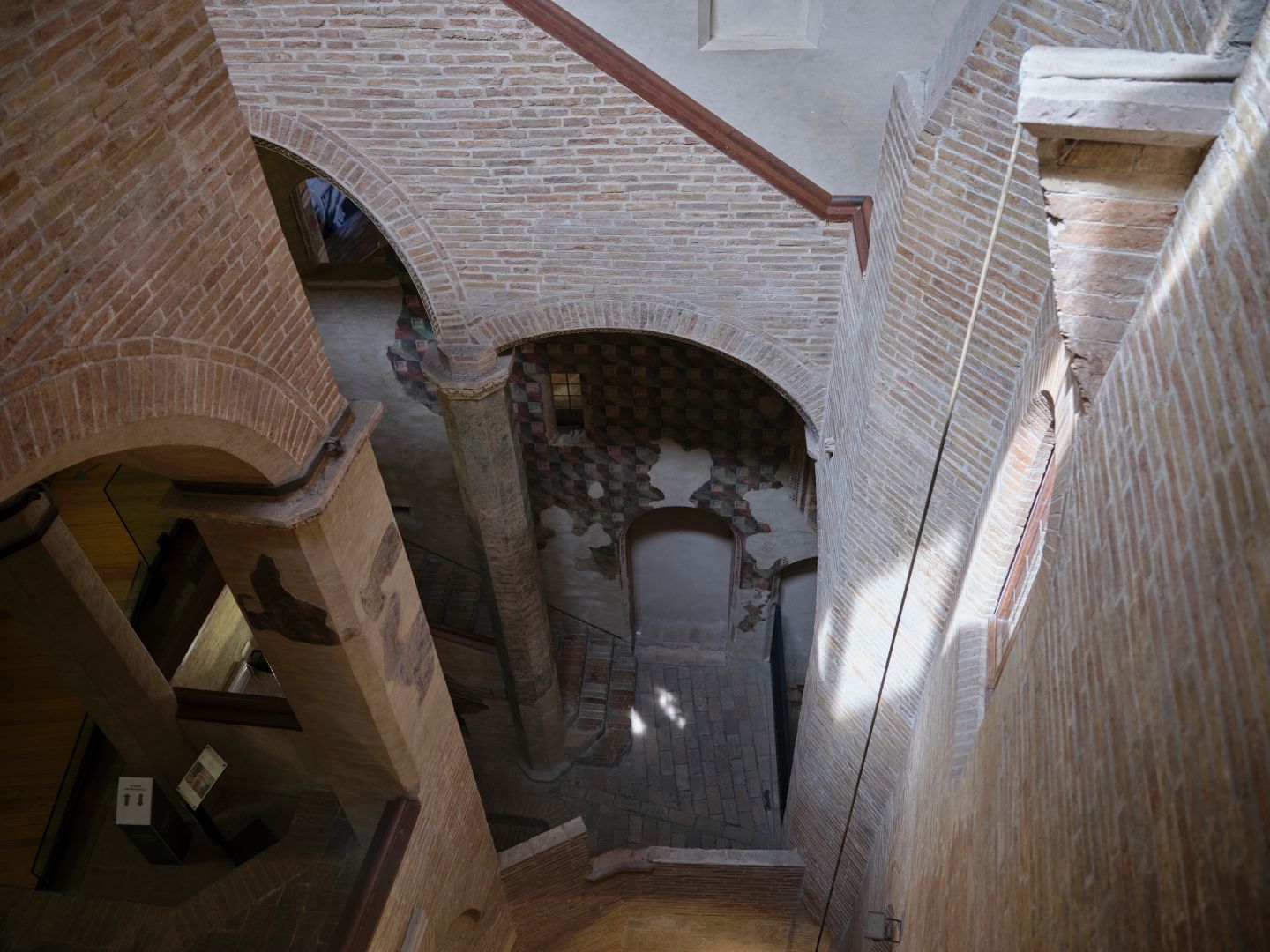
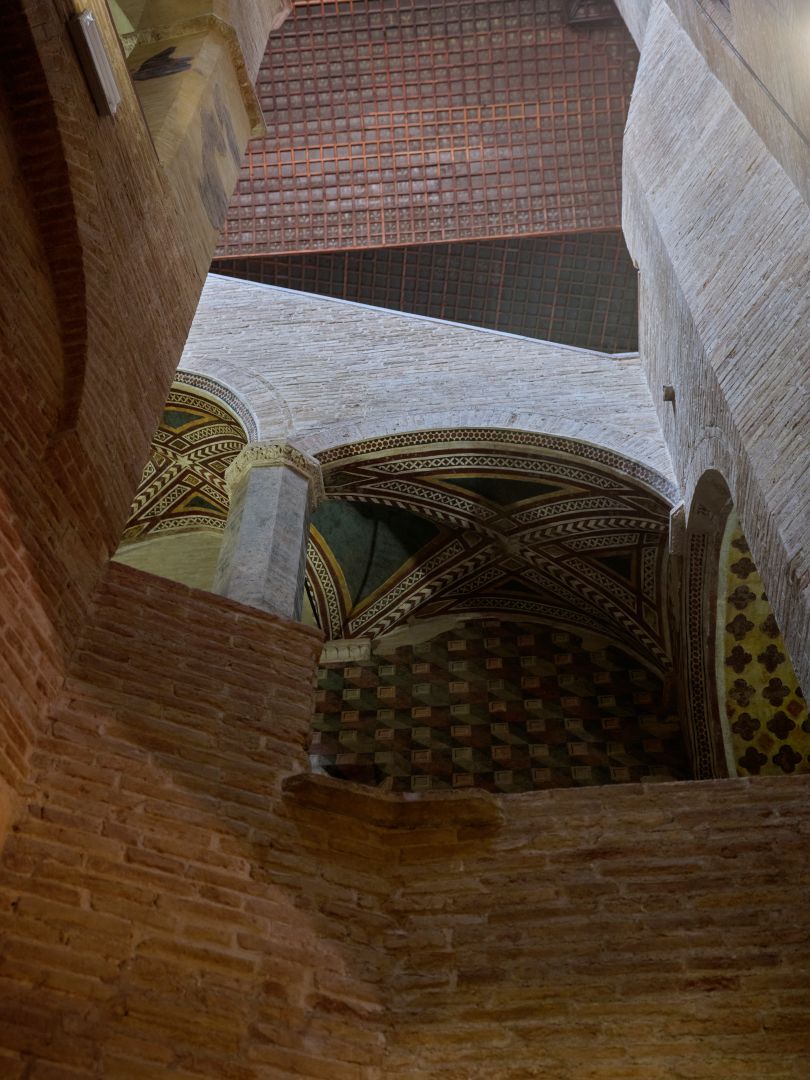
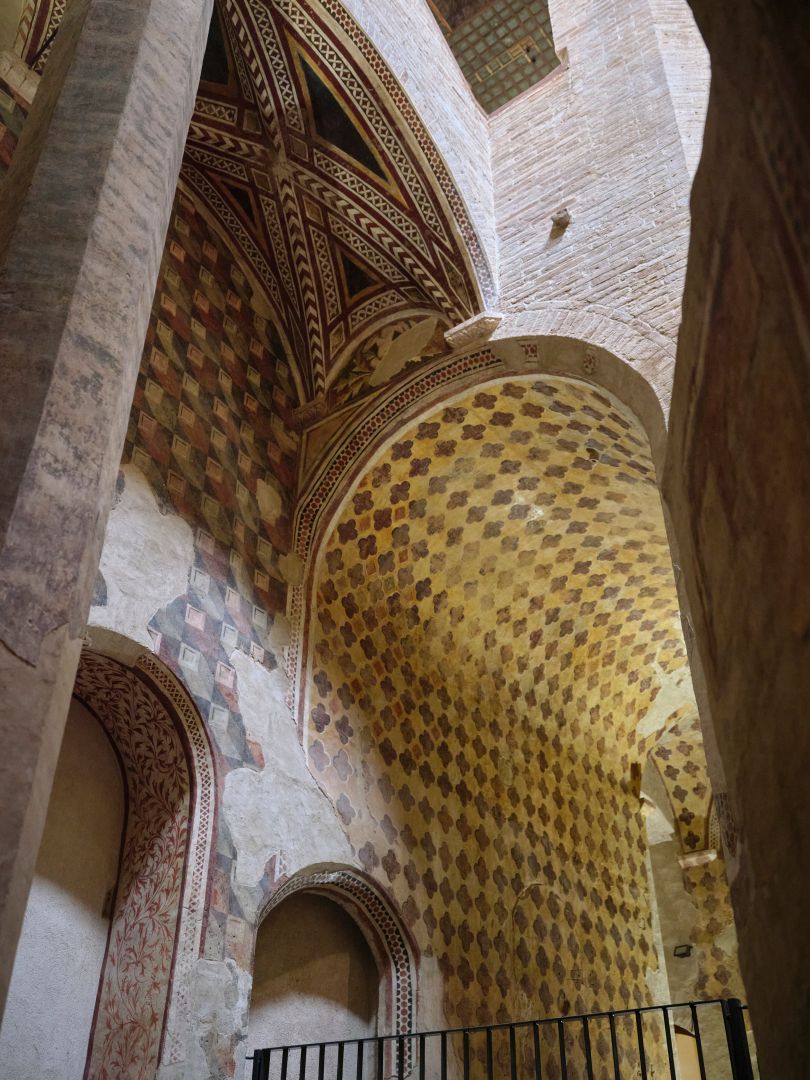
As I said in the earlier article, the Palazzo was not designed as a single building, but had its origins as a number of smaller separate dwellings that were consolidated into a greater one. One effect of this was to leave a large internal space that would once have been an external courtyard. Ugolini III Trinci decided to fill the space with the staircase. The decorations – under the Gothic arches and the trompe l’oeil decorations on the walls – make it clear that this is not merely a prosaic means to access the higher floors, but the focal point of the Palazzo.
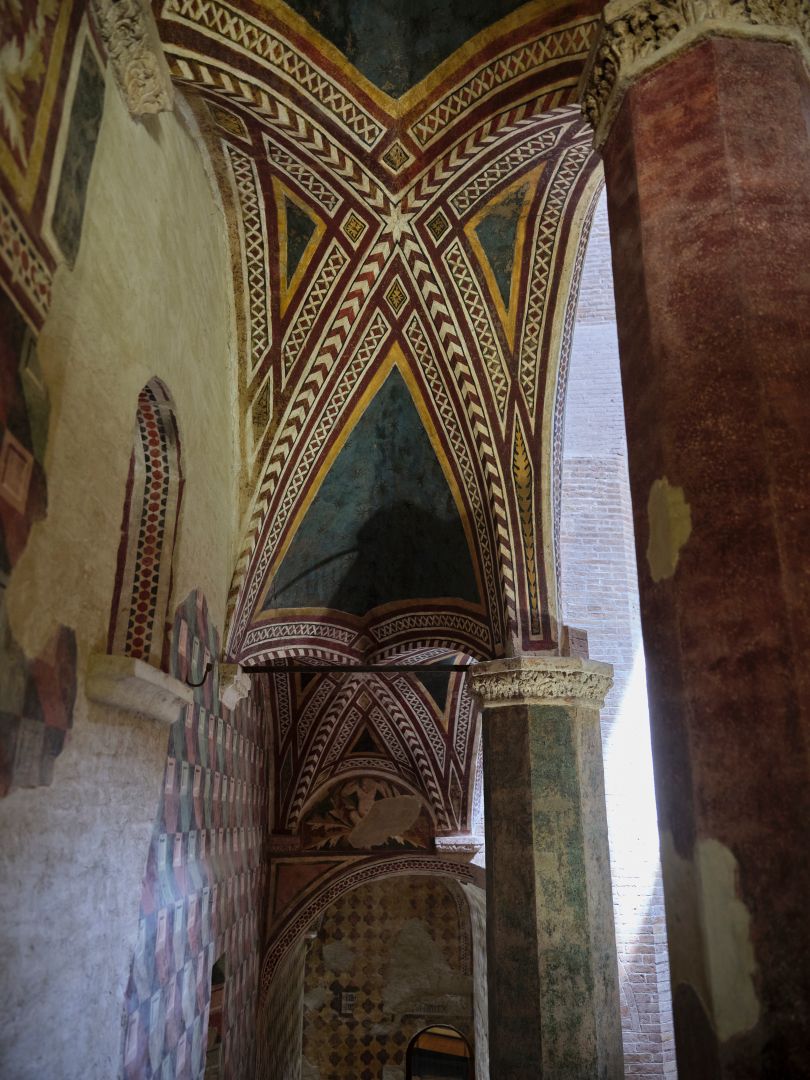
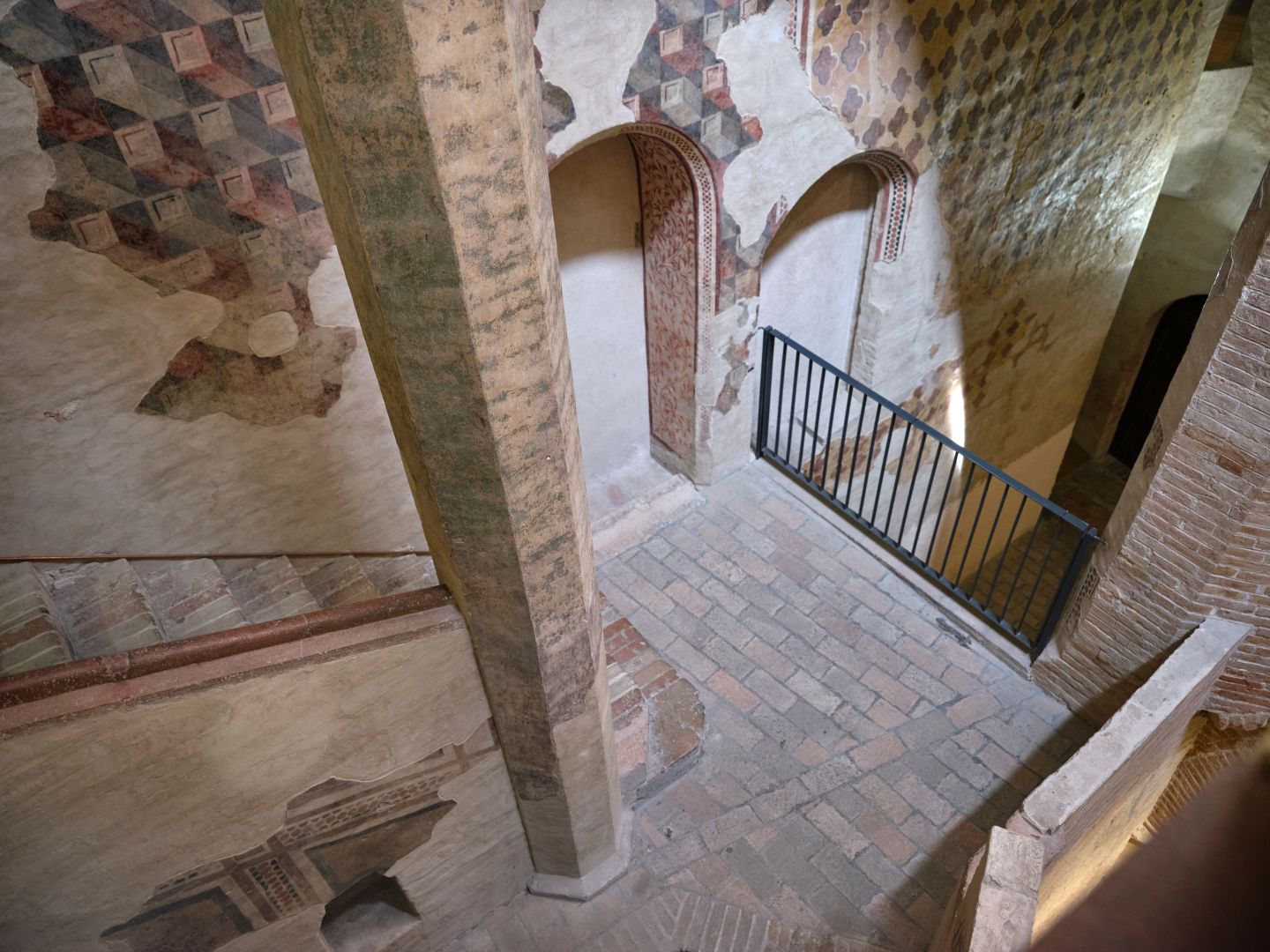
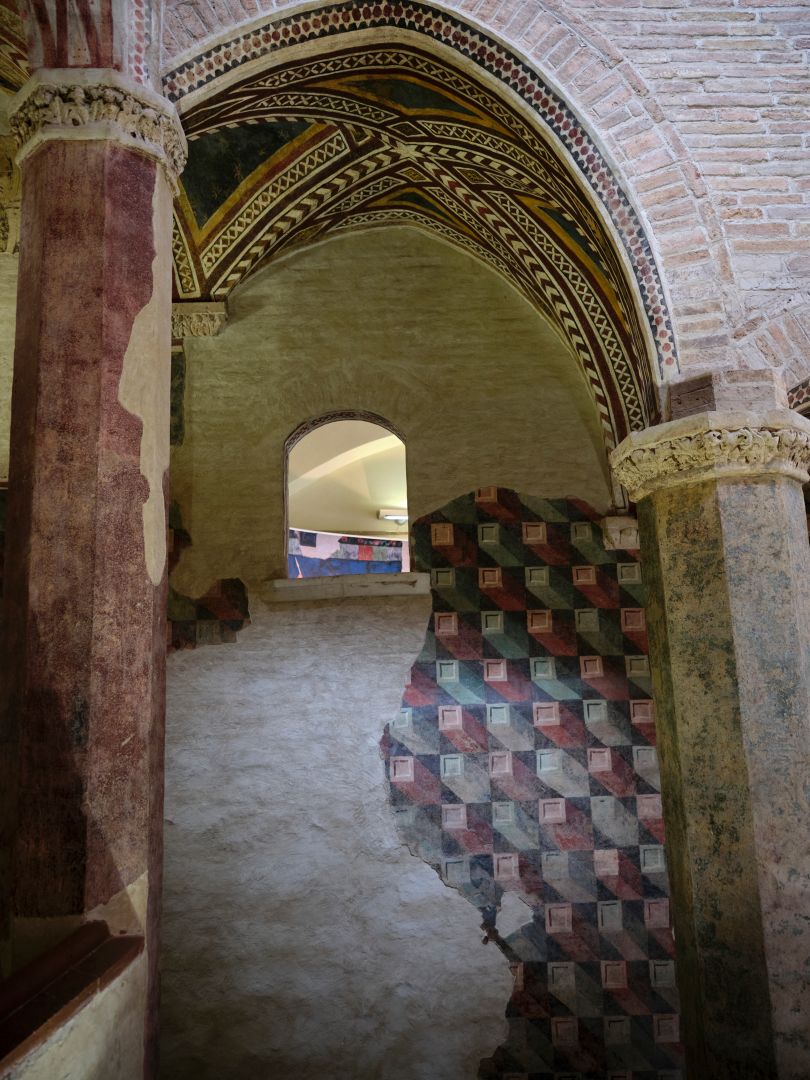
The Private Corridor
Like many important families in Italy, the Trinci arranged private access to the duomo (Cathedral) – in their case in the form of an elevated corridor. You can see it in the photograph below.
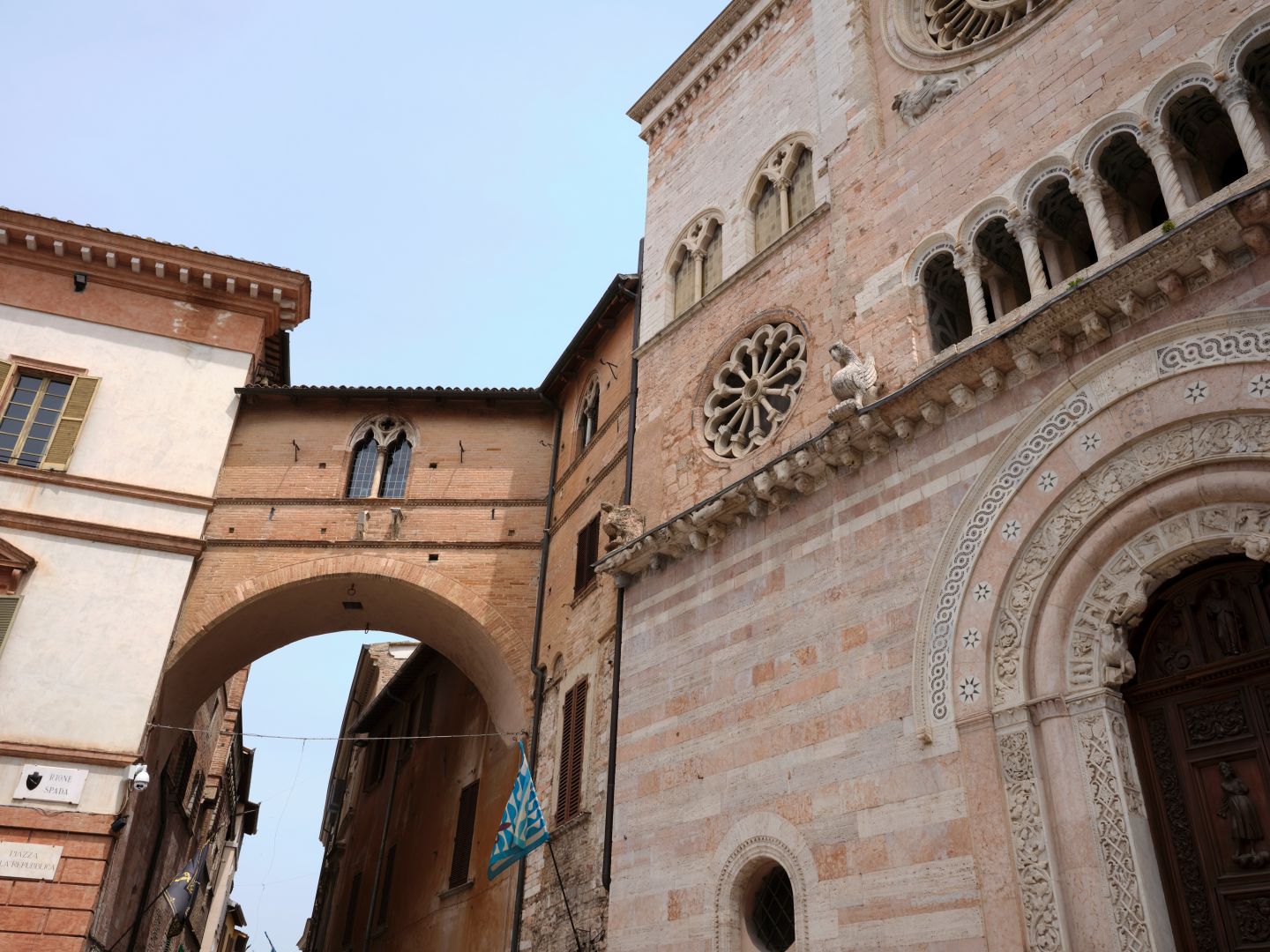
Inside, the decorations are a little confusing. This is because there was originally a fresco depicting The Ages of Man – a common theme. This was later covered by a new fresco depicting The Nine Heroes (or The Nine Worthies) – another common 14th Century theme, but the former Ages of Man fresco was recreated on the opposite wall. Then at some point part of the Nine Heroes fresco has fallen away, exposing part of the original Ages of Man.
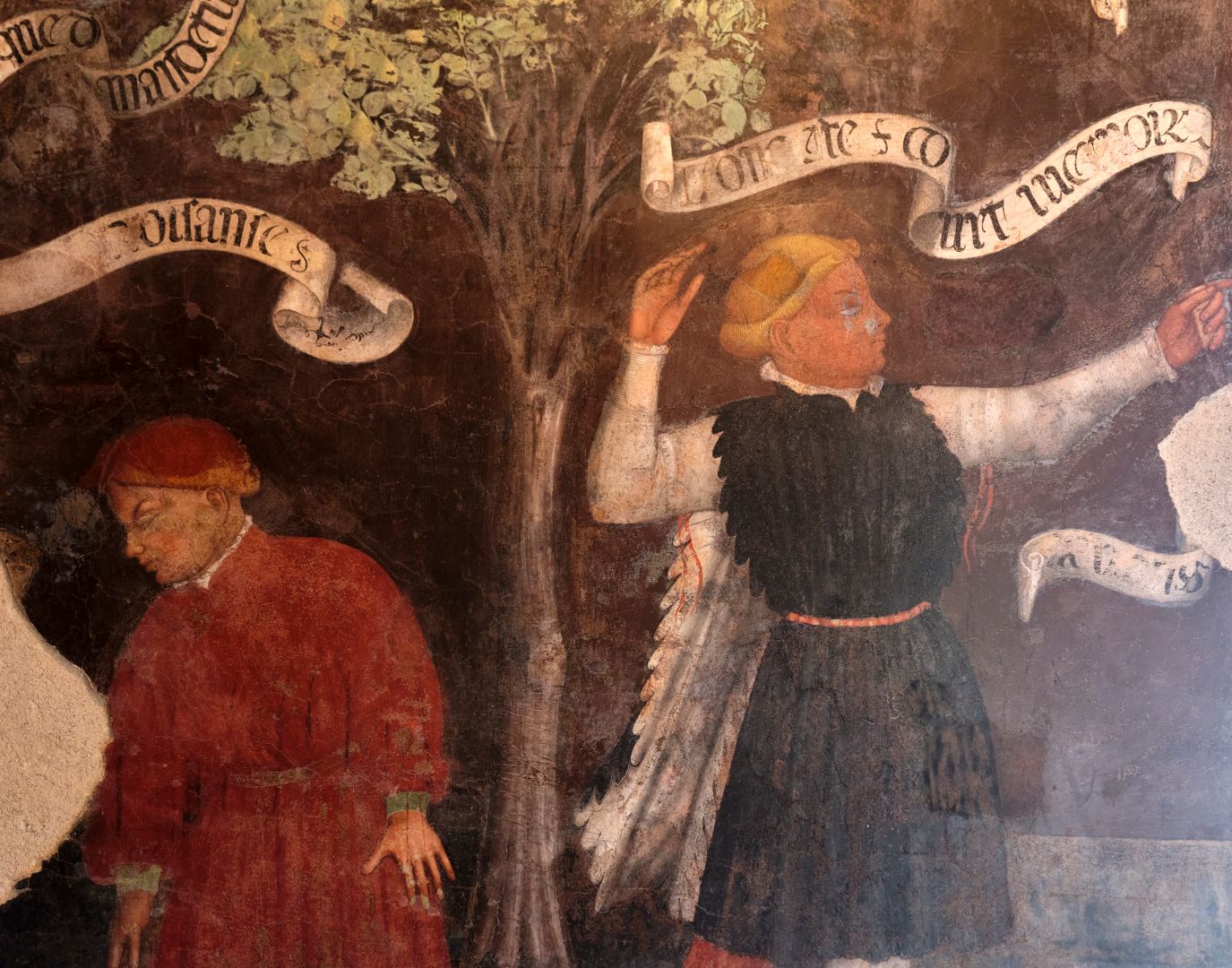
The Nine Heroes theme comes from a French text from 1312 – the first three are from the Bible, being Joshua, David and Judas Maccabeus. The next three are from the Greek and Roman world – Hector of Troy, Alexander the Great and Julius Caesar. The final three are called the “Heroes of Christendom” and are King Arthur, Charlemagne and Godfrey de Bouillon.
I must admit that I had to look up who Godfrey was, but he was one of the leading knights in the First Crusade, who became King of Jerusalem at the conclusion of the crusade. I can’t show you a photograph of his likeness in the Palazzo Trinci because it has been completely destroyed. Instead here is one in which I think the first is Caesar, the second may be Hector, and the third is definitely King Arthur. Identification is hindered by the fact that they were all portrayed in contemporary 14th Century armour, and one is expected to recognise them from the heraldic devices on their shields.
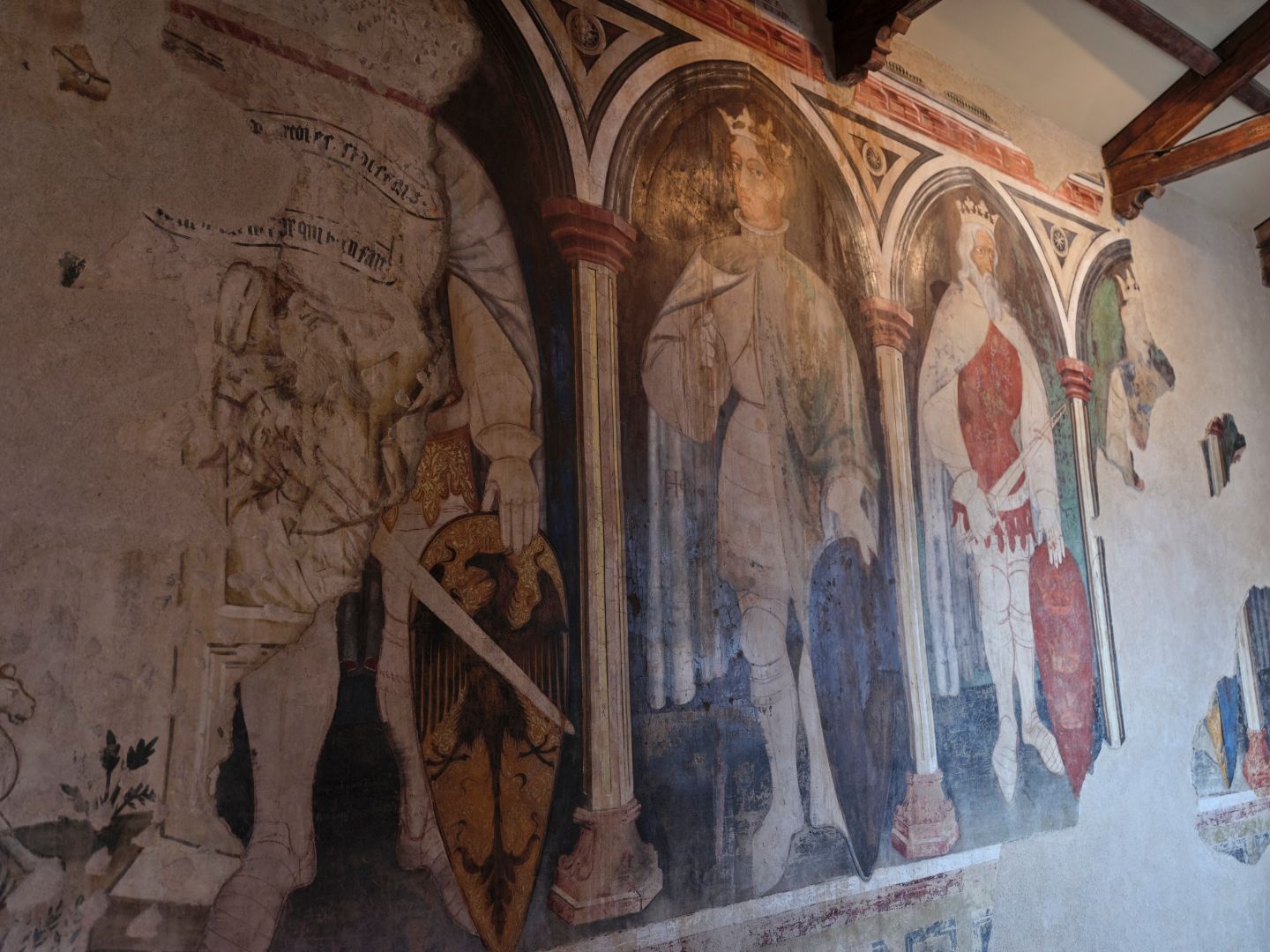
The Chapel
I’ll finish with the best bit; the chapel in the Palazzo Trinci is a little jewel box. It has been fortunate to avoid as much earthquake damage as was suffered elsewhere in the building, and being a consecrated place probably helped it avoid some of the vandalism perpetrated by papal authorities on some of the secular decorations.
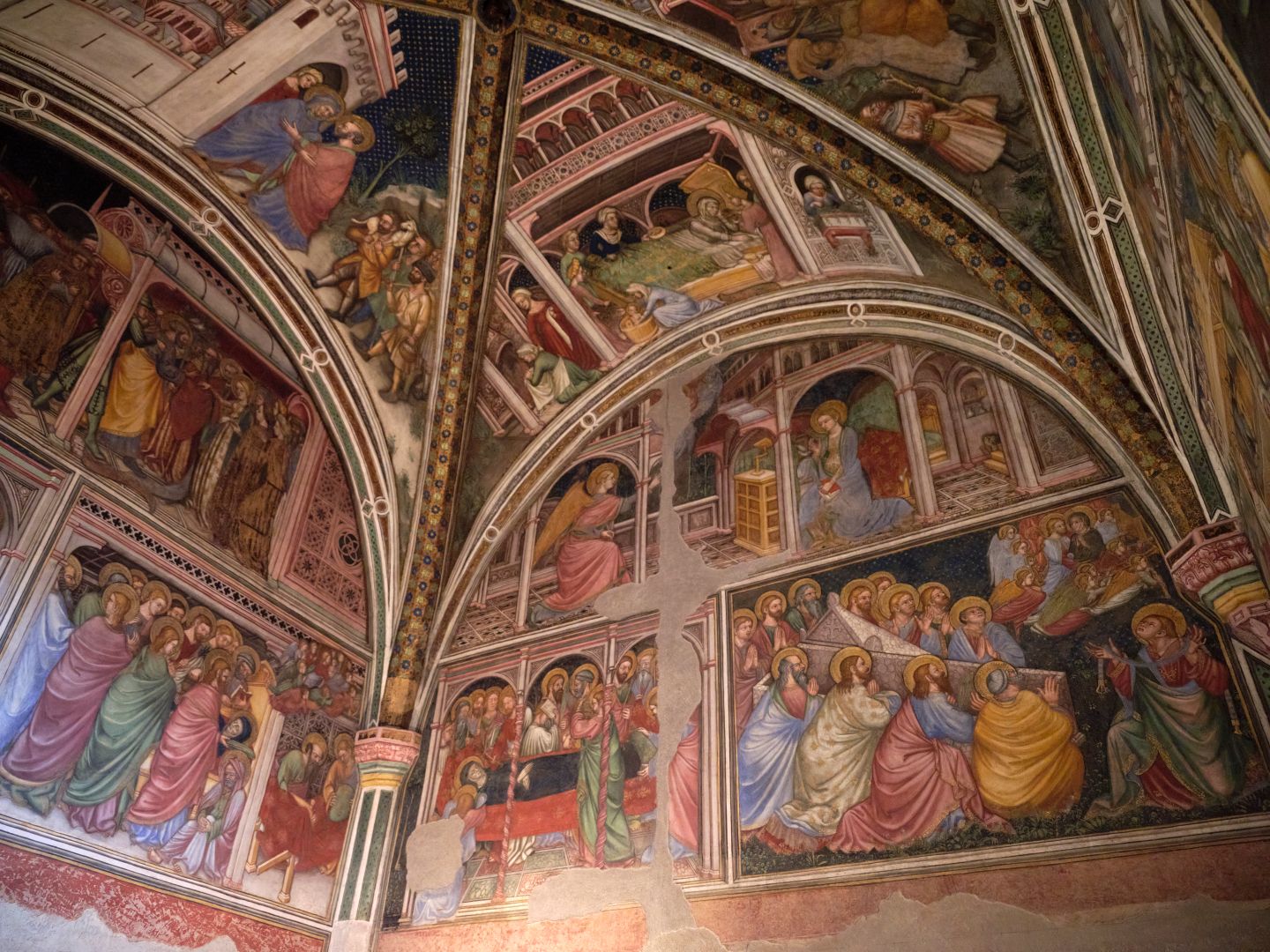
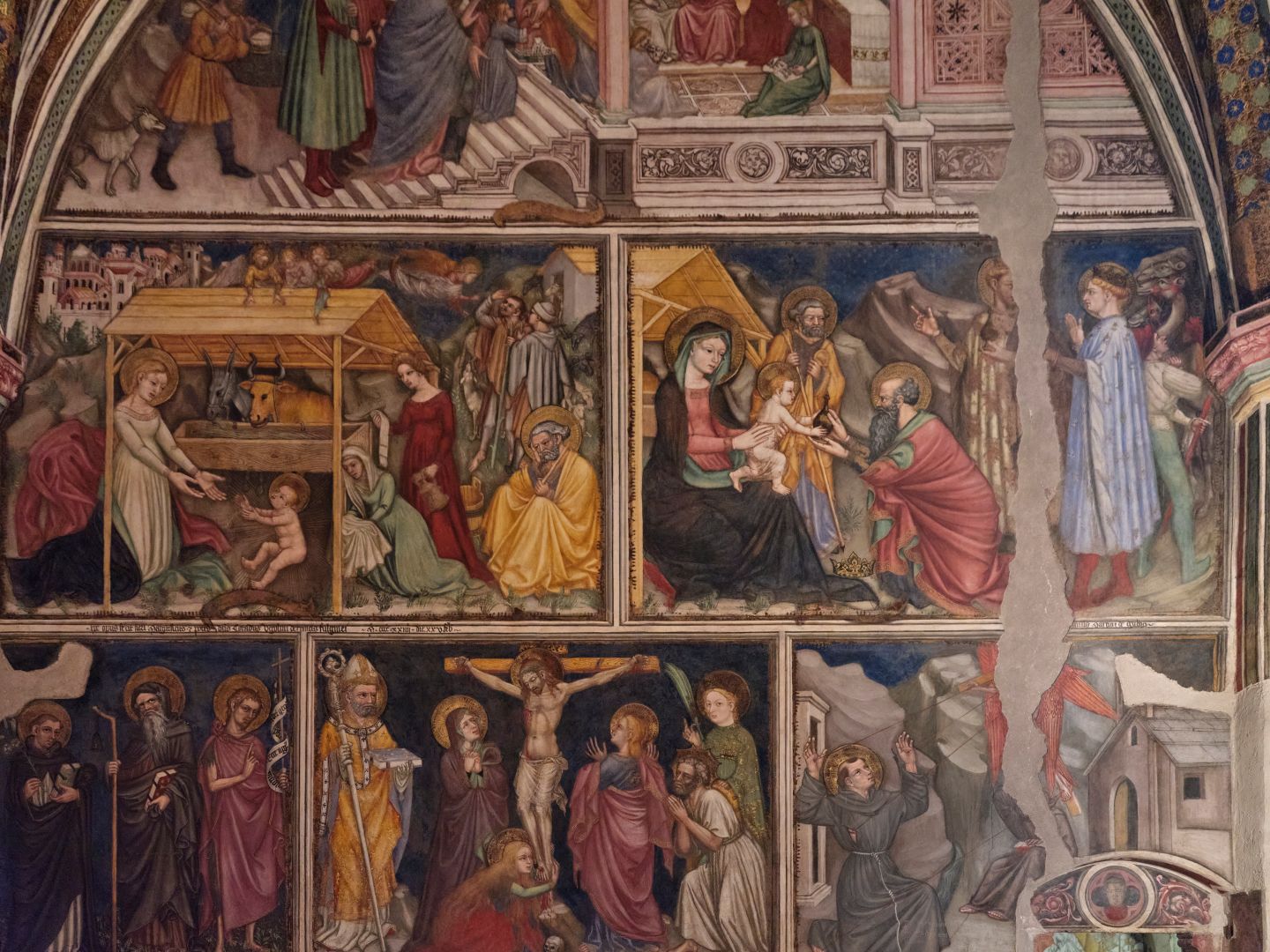
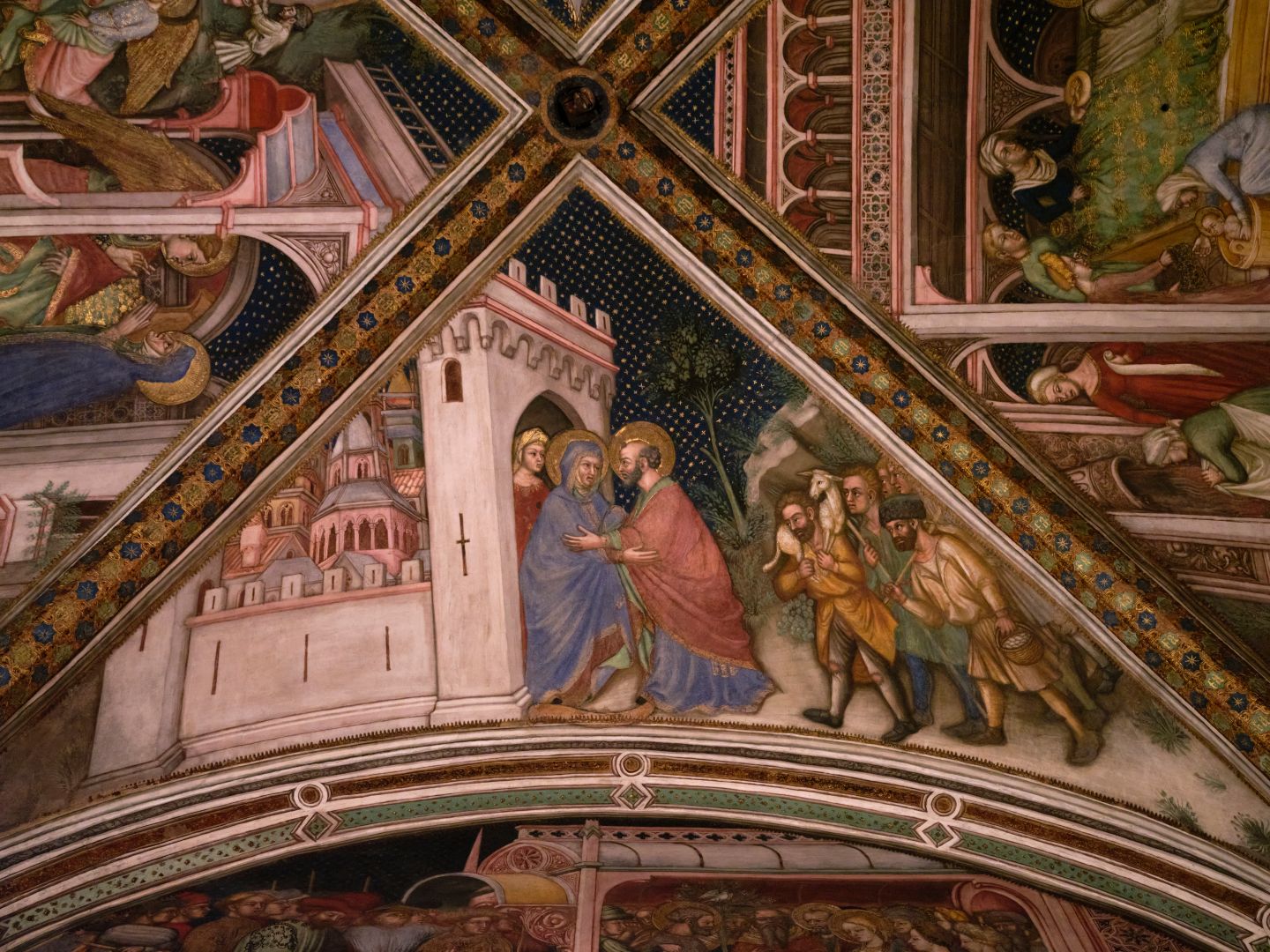
The chapel is dedicated to the Virgin Mary, and every inch of walls and vaulted gothic ceiling is covered with frescoed scenes from the Virgin’s life (with Saint Francis getting a brief appearance as well).
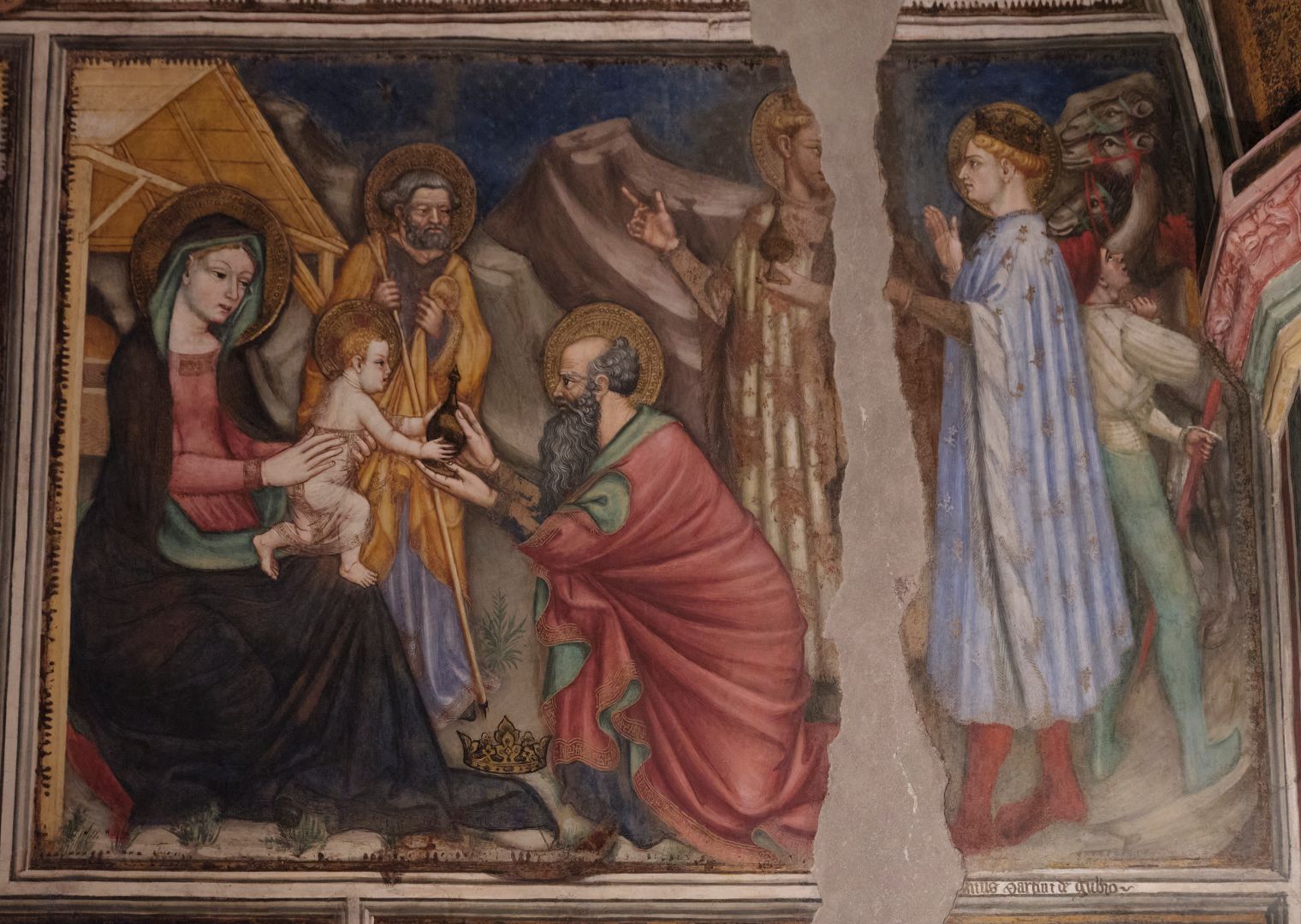
As with much art of this period, a constant pleasure is the way everyone is in wildly anachronistic but gorgeous contemporary costume.
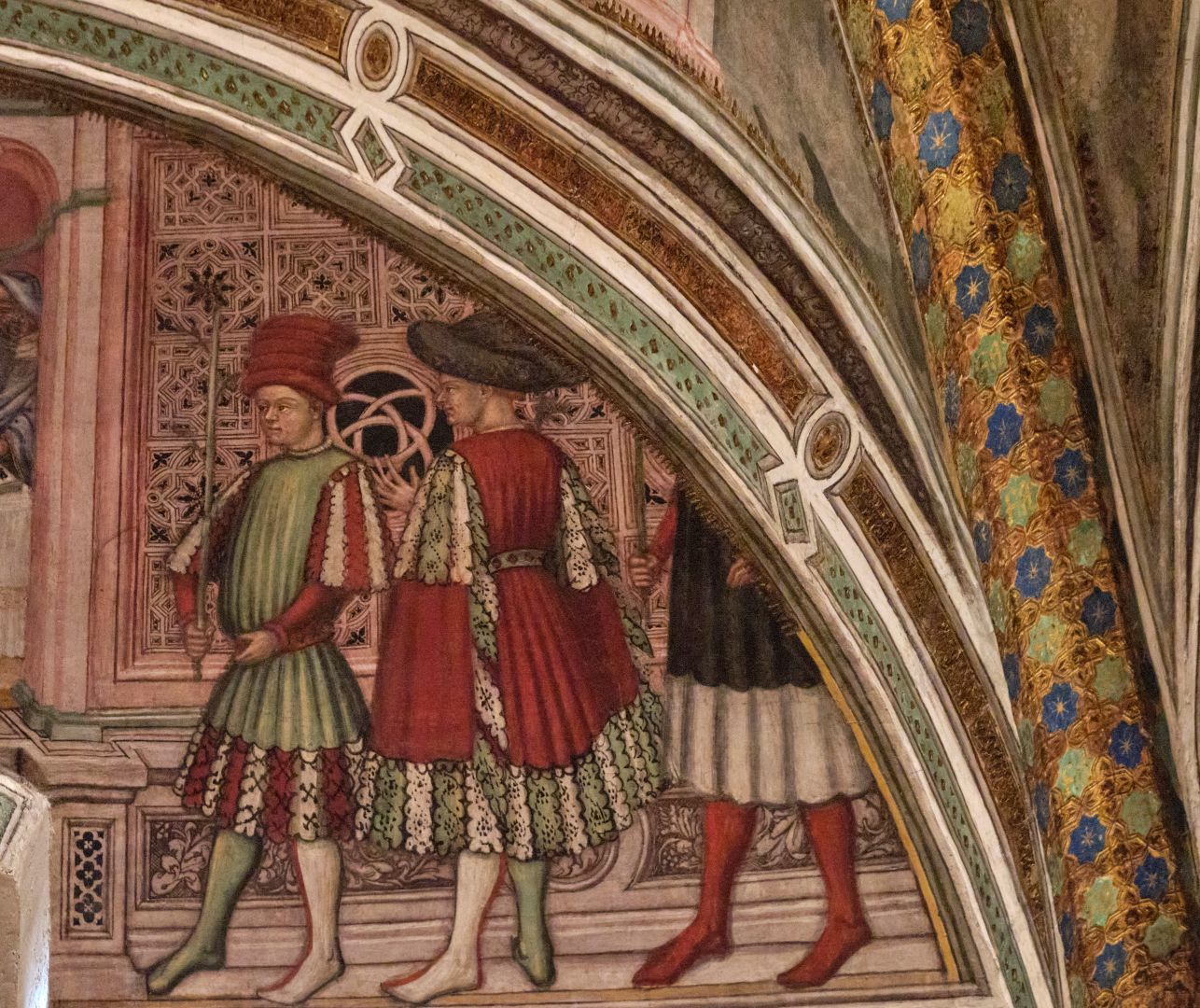

2 Replies to “The Palazzo Trinci in Foligno II – More Jewels of the High Middle Ages”